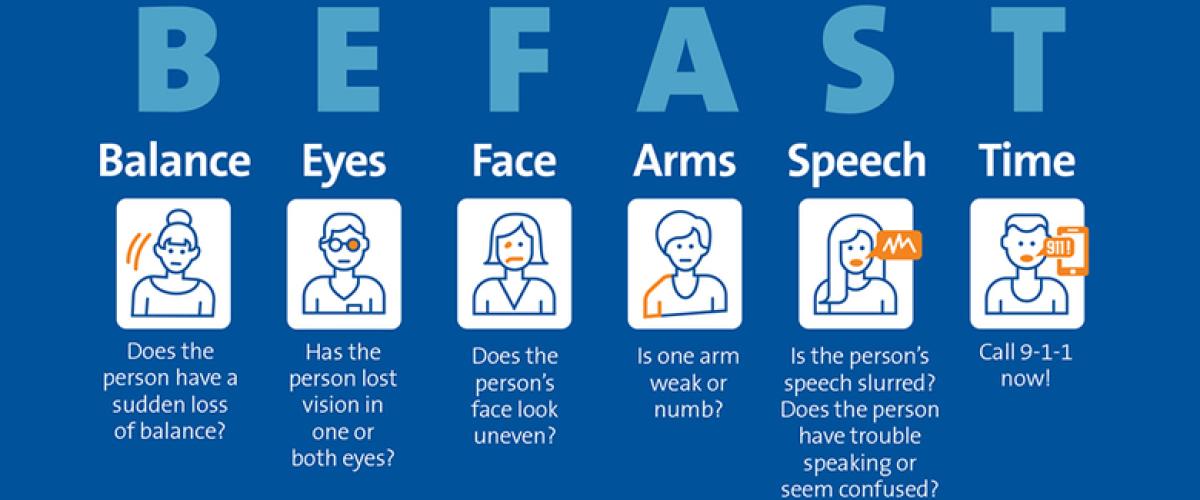A stroke occurs when an artery carrying oxygen and nutrients to the brain is either blocked by a clot or bursts. Strokes are medical emergencies that require immediate medical attention. During a stroke, the part of the brain fed by that blocked or burst artery starts to die, causing permanent brain damage.
Strokes are one of the leading causes of death and disability in the United States. While there is no cure for a stroke, getting medical attention quickly can greatly reduce the damage and make recovery more likely.
There are two kinds of stroke that affect the brain. Most strokes occur when a clot (similar to a scab) gets stuck in an artery inside the brain. These clot strokes are called ischemic strokes. Strokes can also occur from a bleed, or when an artery leaks blood into the brain. These bleed strokes, also called hemorrhagic strokes, are rarer than clot-based strokes. (hemorrhagic stroke). For every one bleed stroke that occurs, there are about six clot-based strokes.
There is also something called a “mini stroke,” or transient ischemic attack (TIA). These occur if a clot forms in the artery but breaks up before it can cause permanent damage. TIAs cause symptoms similar to a stroke, but the symptoms only last from one to five minutes. TIAs are a warning sign that a stroke is coming—possibly weeks or months away, or in just days or hours.
What Are Eyes Strokes?
Similar to some strokes caused by blockages in blood vessels in the brain, an eye stroke is caused by a blockage, typically a blood clot, in an artery in the eye. Eye strokes are a medical emergency, and are vastly underrecognized and undertreated. Fortunately, they can be treated.
A blockage in the main artery in the retina is called a central retinal artery occlusion (CRAO). A blockage in a smaller artery is called a branch retinal artery occlusion (BRAO).
Because these arteries are responsible for supplying blood to the eye, a lack of blood flow can affect your vision. Without quick intervention, you may experience permanent vision loss or blindness.
Learn more about Duke's nationally leading care for eye strokes here.
The most important part of treating a stroke is recognizing when one is happening and getting prompt medical treatment.
Recognizing the signs of a stroke, and getting medical treatment, are the most effective ways to save a person’s life. Use the acronym BE FAST to remember the signs of stroke, and what to do if you, or someone near you, is experiencing them.
B - Balance: Is the person having trouble with balance or coordination?
E - Eyesight: Is the person experiencing blurred or double vision or a sudden loss of vision in one or both eyes?
F - Face drooping: Does one side of the face droop or is it numb? Ask the person to smile.
A - Arm weakness: Is one arm weak or numb? Ask the person to raise both arms. Does one arm drift downward?
S - Speech difficulty: Is speech slurred, are they unable to speak, or are they hard to understand? Ask the person to repeat a simple sentence like, “The sky is blue.” Is the sentence repeated correctly?
T - Time to call 9-1-1: If the person shows any of these symptoms, even if the symptoms go away, call 9-1-1 and get them to the hospital immediately.
What Should I Do If Someone Is Having a Stroke?
Call 9-1-1 immediately if you think that you or someone else is having a stroke. Every second counts. The faster a person having a stroke gets medical attention, the more likely he or she is to recover from a stroke.
Some of the effects of a stroke are permanent, or lifelong. Other effects may get better with time. After a stroke a person may need to work with doctors and other health experts to learn to do things like, walk, talk, and care for themselves again.
You can reduce your chances of having a stroke by taking good care of your body. Doing things like keeping a healthy weight, eating a balanced diet, staying active, and avoiding tobacco will improve your health and lower the chances that you’ll have a stroke.
A stroke requires both short-term and long-term treatment. In the short term, the goal is to restore blood flow to the brain. For clot-based (ischemic) strokes, that means breaking up or removing the clot. For bleed-based (hemorrhagic) strokes, that means stopping the bleeding.
Treatment over the long term focuses on helping a person recover abilities they lost during the stroke. That treatment may include physical therapy to learn to walk and move again. Treatment can also include counseling and therapy to learn healthy living strategies or deal with the emotions brought on by the stroke.
Read more about stroke on the American Stroke Association’s website.
